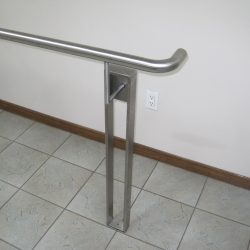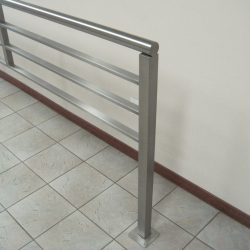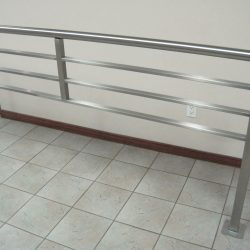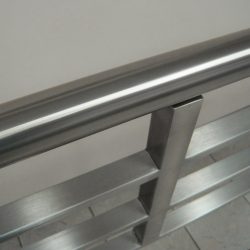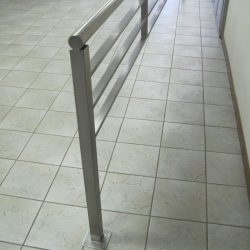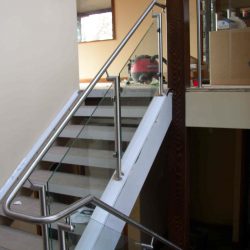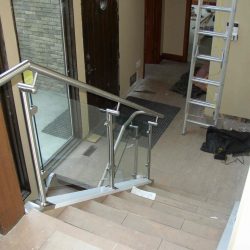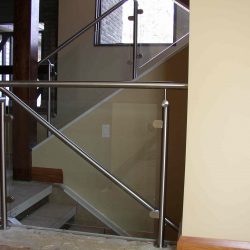Metal railings are a standard in many countries around the world. Since most railings are considered a safety device metal is often used as a material. The most common metals used are aluminum, steel, and stainless steel. Stainless steel is hands down the best material for railings because of its corrosion resistance and hygienic surface. Both aluminum and steel require a protective coating such as anodizing, plating, painting, or powder coating. It is for this reason that the majority of railings are fabricated with stainless steel.
There are many types of railing systems some of which are guard rails, hand rails, crash rails, bumper rails, and cart corrals. Most railing designs utilize round tubing that is cut, bent, welded, and polished. Other designs can utilize solid flat bar for a hand rail in addition to the round tubing for legs. The railing legs are usually welded to a 1/4” stainless steel base plate which is mounted to the floor or ground. The base plate is then concealed with a stainless steel base plate cover.
Railings that are straight, square, and parallel to the floor or ground are relatively easy to fabricate. They become much more challenging when angles are involved such as on a staircase. It takes a lot of experience to get it right and a good template will surely help.
Once the railings are fabricated they are taken to site and fitted. Larger railing systems are fabricated in sections that will need to be joined on site. In some cases welding and polishing may be required.
